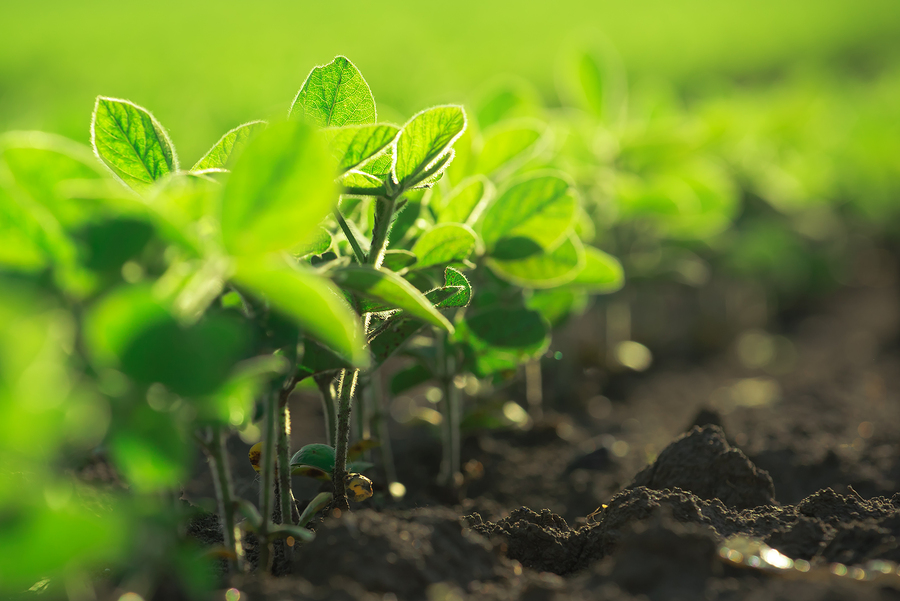The pressures that farmers feel are intense. So, when they were promised that the new dicamba herbicide system would “break the cycle and guarantee weed control in soybeans and cotton,” and be less “risky and volatile” than earlier versions, 1 they were elated. Especially given the fact that their income from soybeans had been in decline for 14 straight quarters. However, dicamba has caused a crisis and now farmers are angry and worried about their livelihoods.
RELATED ARTICLE:
One big issue is that dicamba is drifting from the fields where it’s been sprayed and damaging millions of acres of unprotected soybeans and other crops. Those critical of the decision to use it (it was approved for the first time this spring) are calling it a man-made disaster that federal officials caused because they didn’t have enough data.
As you might imagine, government officials and dicamba’s manufacturers- Monsanto and BASF- have denied that charge saying it works exactly as it was designed. However, because of all the problems dicamba has caused, there are ongoing lawsuits (which Monsanto dismisses as baseless) and state and federal investigations pending. Someone even lost their life (an Arkansas man shot a farmer who had come to confront him about dicamba drift).
RELATED ARTICLE:
“After the Environmental Protection Agency approved the updated formulation of the herbicide for use this spring and summer, farmers across the country planted more than 20 million acres of dicamba-resistant soybeans, according to Monsanto.
But as dicamba use has increased, so too have reports that it ‘volatilizes,’ or re-vaporizes and travels to other fields. That harms nearby trees, such as the dogwood outside Blytheville, as well as nonresistant soybeans, fruits and vegetables, and plants used as habitats by bees and other pollinators.” 2
At low doses, a 2004 assessment of dicamba found it to be “75 to 400 times more dangerous to off-target plants”3 than glyphosate. And, it’s even more toxic to soybeans, the crop it was designed to protect, that haven’t been modified for resistance. (That reminds me of Gardasil, it’s supposed to protect against cancer but has caused it in many women.)
It’s been estimated by a University of Missouri researcher that more than 3.1 million acres of soybeans have been damaged by dicamba, in at least 16 states (some of which are major producers).
So, how exactly was a system this dangerous, approved for use?
“Critics say that the approval process proceeded without adequate data and under enormous pressure from state agriculture departments, industry groups and farmers associations. Those groups said that farmers desperately needed the new herbicide to control glyphosate-resistant weeds, which can take over fields and deprive soybeans of sunlight and nutrients.” 4
(Weeds have grown stronger because of herbicide overuse; by spraying so much glyphosate farmers inadvertently caused the weeds to evolve resistant traits far quicker than predicted.)
At the Universities of Arkansas, Missouri, and Tennessee, field tests found that this dicamba can “volatilize and float to other fields”5 even 72 hours after application- info regulators didn’t have.
RELATED ARTICLE:
Regulatory filings show that Monsanto and BASF submitted hundreds of studies to the EPA but only a few considered volatility in an actual field setting (most were conducted in a greenhouse or a lab). And yet, under EPA rules, Monsato and BASF were solely responsible to fund and conduct those safety tests so the EPA could properly evaluate the herbicide.
Despite all this:
- The EPA denies anything was “amiss” in the approval process.
- A BASF spokeswoman said the company brought dicamba market “after years of research, farm trials and reviews by universities and regulatory authorities.”
- And Monsanto is passing the buck and blaming the problems on farmers. The company’s VP of global stategy, Scott Partridge, believes some farmers have actually just illegally sprayed older, more volatile versions of dicamba with the wrong equipment. But just to make sure there isn’t an actual problem, the evil giant has sent a large number of agronomists and climate scientists to see if anything did go wrong.
As we use “ever-more complicated combinations of poisons on crops, with ever-more complex consequences,”6 we should expect the worse. And its coming faster than we can control. However, should we stop this insanity now we might be able to save our crops, our bees, our environments, and our food. Our fight isn’t over yet.












